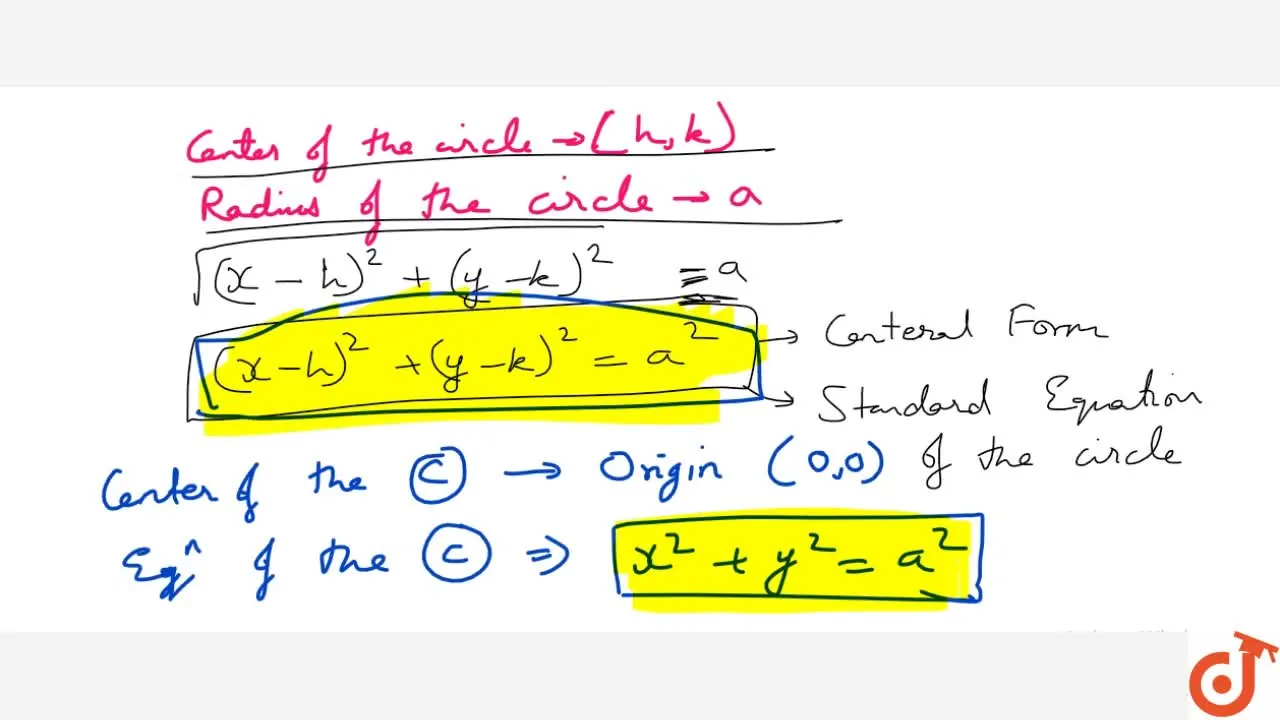Standard equation of circle
Step by step video & image solution for Standard equation of circle by Maths experts to help you in doubts & scoring excellent marks in Class 11 exams.
Similar Questions
Definition|Standard Equation Of Circle|Equation Of Circle In Diameter form|Equation Of Circle In Parametric Form|Intercepts Cut By Circle On Axes|Important Questions|Circle- Special Forms|Position Of Point wrt Circle |Important Questions|OMR
View SolutionFind the standard equation of the circle passing through the points P(3,8),Q(9,6) and R(13,−2).
View SolutionVarious results of standard equation of parabola
View SolutionDefinition of circle | General equation of circle
View Solutiony=mx is a chord of equation of circle x2+y2−2ax=0 . Find the equation of circle this chord is diameter of a circle.
View SolutionAn equation of the tangent at the point (5,2) of a circle is given by 3x−2y−11=0. If the circle passes through the origin, an equation of the circle is
View SolutionThe endpoints of a diameter of a circle are (3,1) and (9,5) , then equations of circle is
View SolutionStandard equation OF hyperbola
View SolutionWhich of the following is the equation of circle
View SolutionIf the equations of the two diameters of a circle are x−y=5 and 2x+y=4 and the radius of the circle is 5, find the equation of the circle.
View Solution


